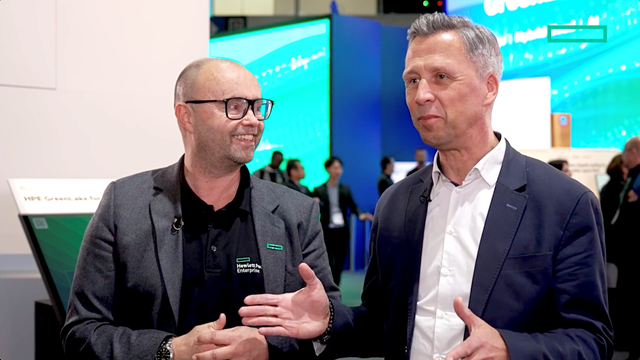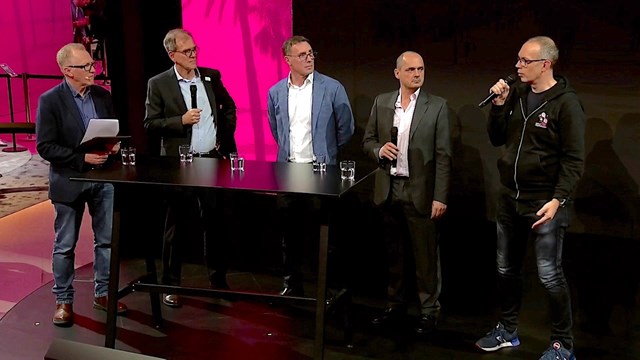
- The FCC to mull new rules addressing space debris
- Spirent Communications launches new Wi-Fi equipment testing service
- HPE and VMware offer taste of documentary on the cloud adoption culture
For many years there has been talk and speculation about the prospect of factories in space. These days it’s nowhere near as far-fetched a concept as it used to be and, in the US, the regulator, the Federal Communications Commission (FCC), is strongly supportive of in-space servicing, assembly and manufacturing (ISAM). At a meeting last week, the politically deadlocked board of the FCC actually voted 4-0 (2 Democrats and 2 Republicans) in unison to analyse and report back on the challenges and opportunities of ISAM – of which there are many. ISAM also refers to a wider range of space-based pursuits, both in earth orbit and in deeper space. They run the gamut, from servicing, repairing and refuelling of satellites to the building and assembly of space structures, and even on to the manufacture of devices, exotic new components and new drugs. However, the regulator added the major caveat that no orbital industrial processing will be feasible until something is done to clear some of the many millions of bits of space debris – including all the tools, spanners and wrenches, for example, that are dropped by space-walking astronauts, tiny and all but invisible, but still potentially lethal, bits of detritus that measure only a millimetre across, and even items as large as an SUV. The FCC’s new initiative, “Space Innovation”, is the first concrete evidence of action being taken since, back in April, the Biden administration published its ISAM National Strategy. The FCC chairwoman, Jessica Rosenworcel, said: “A new space age is here with new commercial markets, new market entrants and new technologies, pioneering a new range of satellite services and space-based activities.” She added: “We believe the new space age needs new rules because here on the ground the regulatory frameworks we rely on to shape space policy, they were largely built for another era. They were designed for a time when going to space was astronomically expensive and limited to the prowess of our political superpowers. No one imagined commercial space tourism taking hold. No one believed crowdfunded satellites or mega-constellations in low-earth orbit were truly possible. And no one could have conceived of the sheer popularity of space entrepreneurship. But it’s all happening. And if we are going to promote United States leadership in the emerging space economy, we need to make sure our rules are prepared for the proliferation of satellites in orbit and new activities in our higher altitudes. In short, we have work to do. And it starts with this inquiry.” Hence the FCC’s “notice of inquiry” seeking the input of data and comments from interested parties on ISAM, how the FCC can support it and tangible economic and other benefits to society that could result. Traditionally, the FCC has been responsible for assigning and licensing communications spectrum but, in recent years, it has also written a set of rules and guidelines for orbital debris. It is very important work. Data from NASA notes that orbiting debris travels at up to 17,500 mph and that tiny fragments of paint flecks were destructive enough to badly damage the windows of US space shuttles. The NASA notes add: “Millimetre-sized orbital debris represents the highest mission-ending risk to most robotic spacecraft operating in low-Earth orbit.” Quite how and when a start will be made on either collecting or de-orbiting the estimated 100 million pieces of space junk out there remains to be seen, but something needs to be done or disaster will strike somewhere sooner or later.
Spirent Communications claims it has developed a first-of-a-kind “send us your device” test-as-a-service option for Wi-Fi users. It will provide access to the capabilities of Spirent’s Octobox emulation and testing solution for organisations for whom the capital expenditure and considerable expertise required to own and manage such complex test setups may not be feasible. Spirent claims the growing complexity of Wi-Fi technology means developers and manufacturers must rethink their approach to performance testing for new Wi-Fi-enabled devices. “The progression of Wi-Fi 6 and 6E, the growth of mesh multi-point access networks, and expectations around 5G and Wi-Fi convergence are creating new application and business models, which require fresh approaches to testing”, claims the company.
At last! We’ve hit the big time! Dig out the tux, stroll down the red carpet! The editorial team at TelecomTV (well, one of them) has been invited to the premiere of a new movie! It’s called “Clouded. Uncovering the culture of the cloud” and, basically, it seems to be a rallying call for a global reconsideration of enterprise cloud strategies. A news release shows that Hewlett Packard Enterprise (HPE) and VMware have been collaborating for a year or so on a new documentary, which is being made by or with the involvement of Dark Matter which, presumably, is a US film production outfit but it is difficult to track them down to find out for sure. Anyway, HPE and VMware have partnered with Dark Matter’s “cloud anthropology unit” for the making of the movie. At the moment, only the trailer is available to view but that’s enough to showcase some very high production values, international location filming and interviews with some unnamed (in the trailer, anyway) but evidently influential commentators on all things cloud. Quite where the call for reconsideration of cloud strategies originated is not made clear, but it’s a fair bet that Adam Smith’s invisible hand of self interest has been at work along the way. We’ll know for sure when we see the film. The press release says the work will “uncover the rapidly advancing culture and subcultures of cloud adoption” and that “what initially started as a research programme in the public sector to determine if the cloud-first policy was a viable mandate for transformation, quickly grew into a broader project. It became apparent that the challenges faced are ubiquitous across all industries and geographies. This sparked our collective curiosity, and the clouded journey began to unfold. Thus, the film looks to explore a prevailing culture that still points towards a public cloud-first approach, but with seemingly limited questioning of the potential risks it could pose.” Ah, now we are getting to it. The press release is all very highfalutin, being packed with sentences such as, “Behavioural specialists would cite that human behaviour and cognitive bias have likely impacted cloud strategy decisions, along with the continued hype from the dominant public cloud providers. This is something that many of the film’s contributors verified, sharing how the public cloud became somewhat fashionable, the pop culture of the technology world” and, “It is human nature to seek recommendation, trust and direction from peers when making decisions. In economics and finance this is often referred to as rational herding, where market participants react to information about the behaviour of other market agents or participants rather than the behaviour of the market, and the fundamental transactions. But just because everyone else is doing it, does it mean it’s the right thing to do?” In essence then, the central tenet of the film seems to be that many enterprises use the hyperscale public cloud more or less by default and perhaps they shouldn’t, especially as the world becomes ever more connected. The HPE release makes it plain the company does not believe a one-size-fits-all solution is the answer in a rapidly changing world and thus believes: “This is the decade of a hybrid approach and a shift to a culture of conscious cloud strategy and decision making.” It adds: “With much of the world’s technology infrastructure reliant on public cloud, is it wise to let the trends and behaviours of the last decade continue unchallenged with so much more than just individual businesses’ consequences at stake? There is a growing movement of an alternative viewpoint being heard through organisations, such as Gaia-X, that call for a reconsideration and a rebalance of data sovereignty and sharing.” We’ll report back on the film after seeing it.
And staying with VMware, the company has just published its eighth annual Global Incident Response Threat Report, which shows that the number of cyberattacks continues to grow as criminals use new technologies, such as deepfakes, to further their nefarious ends. They are also now attacking application programmable interfaces (APIs) and incident responders. Rick McElroy, principal cybersecurity strategist at VMware, commented: “Cybercriminals are now incorporating deepfakes into their attack methods to evade security controls. Two out of three respondents in our report saw malicious deepfakes used as part of an attack, a 13% increase from last year, with email as the top delivery method. Cybercriminals have evolved beyond using synthetic video and audio simply for influence operations or disinformation campaigns. Their new goal is to use deepfake technology to compromise organisations and gain access to their environment.” Attacks are now being routinely made on APIs, with 23% of incursions now aimed at compromising API security. Hits on APIs included data exposure – 42% of respondents cited such incidents in the last 12 months. Meanwhile SQL and API injection attacks were reported by 37% and 34% of respondents, respectively, while distributed denial-of-service (DDOS) attacks were cited by 33%. There has also been a marked increase in lateral movement within networks as attackers that have successfully breached a network’s defences move within the system to expand their presence and seek critical active directory (AD) objects (entities representing resources, such as individual users, computers, printers), live hosts and services to exploit, as well as to steal and reuse credentials to increase and multiply privileges as they spread out across the network. The new VMware report shows lateral movement was observed in 25% of all attacks last year. Elsewhere, ransomware actors now incorporate ever more sophisticated extortion techniques and, to make matters even worse, cartels of criminal cyber gangs now actually collaborate on the dark web to coordinate attacks. Indeed, 57% of respondents said they had encountered such attacks over the past 12 months, while 66% have experienced “affiliate programs'' and partnerships between ransomware groups. At the human level, 47% of professional incident responders experienced extreme stress and even complete burnout over the past 12 months. Of that group, 69% say that they are considering leaving their jobs because of the endless and mounting pressures they are constantly under.
South Korean operator SK Telecom (SKT) was hit hard by the ongoing global supply chain hurdles in the second quarter of 2022. It stated in its earnings announcement that it has booked a 67.6% drop in net income to 258.1bn won (KRW) ($197.8m) due to factors such as “the exclusion of equity method gains” from SK Hynix or, in other words, it was far from reaping any rewards from its investment in the chipmaker. Despite this, the company reported a 4% rise in revenue to 4.290tn KRW and a 16.1% increase in its operating income to 459.6bn KRW, boosted by growth in key business areas, such as fixed and mobile telecoms services. In the period, SKT’s 5G subscribers surpassed 10 million, taking up half its total mobile subscriber base. The telco also noted strong performance in the enterprise segment, which includes growth in datacentre services and a 133% year-on-year increase in revenue for its cloud business. SKT also saw an uptake of its metaverse platform, Ifland, which now has more than 1.63 million monthly active users. Ifland was launched a year ago and SKT recently announced it will also be introduced in Germany before the year-end through a partnership with Deutsche Telekom – see Deutsche Telekom to bring SK Telecom’s metaverse to Europe.
When the UK exited the European Union, it became apparent that the then recently negotiated no-roaming-charge pact would no longer automatically apply to UK users. But then the big mobile operators all pledged not to reintroduce charges. Yay!…until they decided they would after all. Boo! All except Virgin Media O2, which is now the only network still offering roaming at no extra cost. That development has, predictably, created a PR disaster of epic proportions. Just as the population was bracing itself for runaway inflation, the mobile phone company has announced that roaming costs are back as well. If that weren’t bad enough, the UK’s consumer champion, Martin Lewis, featuring today in just about every newspaper, put the boot in proclaiming that: “Mobile companies could rinse you with surprise charges this month.” Well they could, but they probably won’t. Happy holidays.
It’s amazing what you can divine by watching markets. Radio Free Mobile analyst Richard Windsor reports that crypto mining appears to have depressed the market for second-hand Nvidia graphics cards. Richard explains that the cards are used by cryptocurrency miners (they are a “core component” of the rigs they use, he says) but are now being offloaded by miners in response to the crypto slump. With the cost of bitcoin mining (as a result of higher electricity prices and other things) making the cost of unearthing each bitcoin about $12,000, mining them for $10,000 a piece has become uneconomic and miners are fleeing the business, leaving piles of second-hand Nvidia cards behind them (along with a much-reduced appetite for buying new ones).
- The staff, TelecomTV
Email Newsletters
Sign up to receive TelecomTV's top news and videos, plus exclusive subscriber-only content direct to your inbox.




